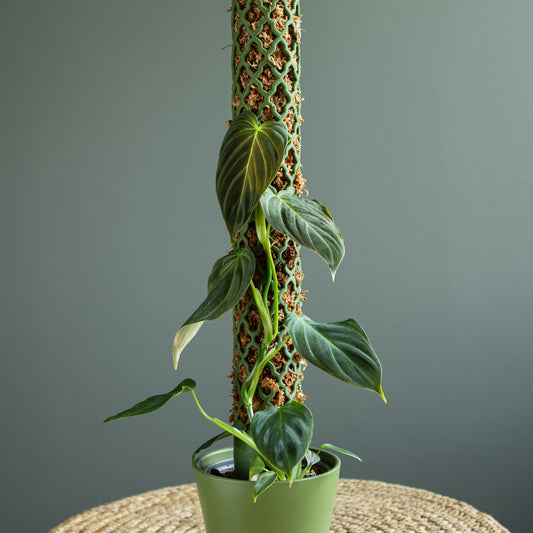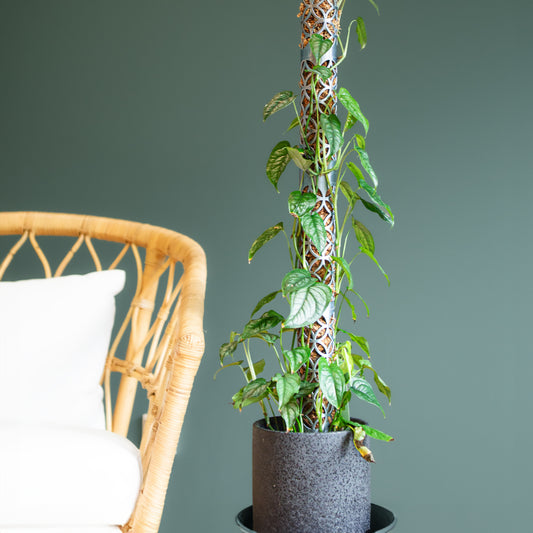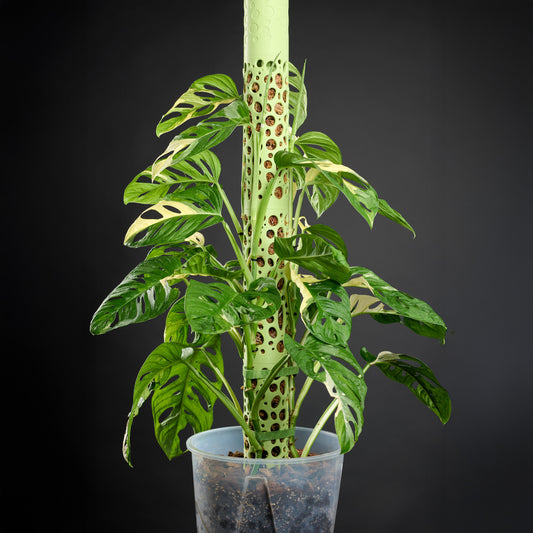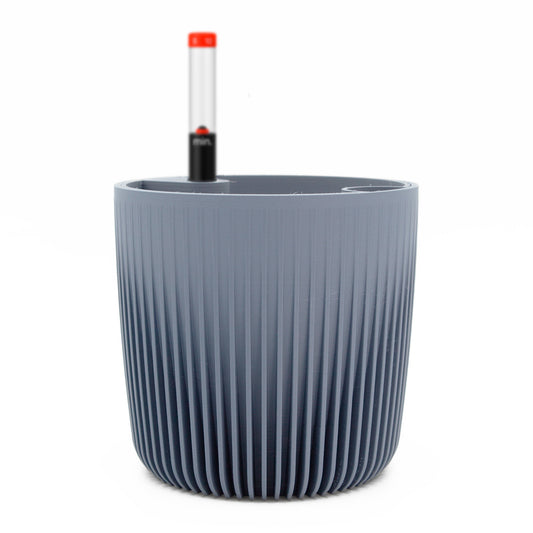Choosing the Right Size of the Pole
We offer moss pole systems in two diameters: M - 5.1 cm and L - 6.6 cm. The M size is suitable for plants with smaller roots up to 10 mm in diameter, such as Philodendron Splendid. The L size is ideal for plants with roots up to 15 mm in diameter, such as Monstera Thai Constellation.
Regarding moss pole height, you can start with what your plant actually needs right now, and later add more modules on demand.
Choosing the Right Base for Your Moss Pole
Selecting the appropriate base for your moss pole is crucial for ensuring stability and plant health. We offer three types of bases: concentric anchor, displaced anchor, and stake.

- Anchor (Concentric): Ideal for aroid plants with multiple stems that grow around the moss pole, such as philodendrons and monsteras. This base ensures that your moss pole remains firmly anchored in the pot.
- Displaced Anchor: Best suited for single-stem aroid plants like anthuriums and pothos. This base provides support without the need for frequent repotting.
- Stake: A simpler option for smaller or less top-heavy plants.
When choosing the size of your anchor, match the diameter of the base to the diameter of your pot. The height of the base should be slightly taller than the pot to prevent the moss from touching the soil, which can lead to rot.
Installing the Anchor Base
- Place the anchor base at the bottom of an empty pot. Optionally secure it using plastic zip ties through the holes provided in the base for extra stability.
- Once the anchor base is in place, you can proceed to plant your greenery. Ensure that the plant is firmly seated and the base is stable. Plant with proper positioning, ensuring the roots are directed toward the moss-filled modules.

Preparing the Moss and Assembling the Moss Pole
- Before filling the modules with moss, soak the sphagnum moss in water until it is fully hydrated. Avoid packing the moss too tightly in the modules to allow space for the roots to grow.
- Attach the modules to each other and to the anchor base securely. This provides a solid structure for the plant to climb.
- Carefully insert existing roots into the moss to ensure they have direct contact and can benefit from the moisture and support provided by the moss pole. Use Velcro ties to secure your plant to the moss pole at least until the plant is firmly rooted in the moss pole. This will help stabilize the plant and guide the aerial roots into the moss.

It is not recommended to use plastic zip ties to attach your plant to individual crossbars of the moss pole. This method can damage the plant by cutting into its stems and roots, especially as the plant grows and the ties become tighter. Additionally, individual crossbars are not as strong as the overall structure of the moss pole and may break under the stress, compromising the stability and integrity of the entire setup. Always use gentle, plant-friendly methods like Velcro ties to ensure both your plant and moss pole remain intact and healthy.
Maintaining Moisture with Drip Irrigation
- Adjusting the Drip Valve: The drip system includes a valve to control the flow of water. When the moss is dry, open the valve fully and fill the drip reservoir multiple times to thoroughly moisten the moss.
- Maintaining Moisture Levels: Once the moss is adequately wet, tighten the valve to a nearly closed position. This will allow the system to maintain a slow, steady supply of water, keeping the moss consistently moist.

By following these steps, you can ensure that your sphagnum moss pole provide the perfect support and environment for your climbing aroid plants to thrive. Remember to regularly check the moisture levels and adjust the drip irrigation as needed to keep your plants healthy and growing.









